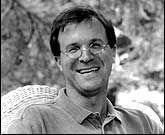Modern Love
By Ilan Stavans with Veronica Albin
A minor Jewish holiday, Tu B'av—which literally means the 15th day of the month of Av—has been associated with courtship since ancient times. First mentioned in the mishnah, the precise origins of the festive holiday are unknown. Today, Tu B'av is celebrated as a holiday of love, similar to Valentine's Day.
For this Tu B'av issue, we present a discussion on love between Ilan Stavans and Veronica Albin. Stavans' book Love and Language (Yale University Press, 2007), from which the piece is excerpted, is comprised of six dialogues between Albin and Stavans, in which they trace the evolution of Jewish love, from the biblical idea—a mainly procreative function—to a more modern, secular concept in the post-Enlightenment era.
Verónica Albin: How has Jewish love changed through history?
Ilan Stavans: Jewish love isn’t portrayed in the Bible as an emotion. Instead, it’s a biological duty. From Adam and Eve on, sexual encounters are described tangentially, as a means of reproduction. The liaison of the three patriarchs, Abraham, Isaac, and Jacob, and the four matriarchs, Sarah, Leah, Rachel, and Rivkah, are consistently about the duty to be paired and multiply. Of course the Bible does make exceptions, most importantly the Shir ha-Shirim, which the King James version calls the Song of Songs.
VA: Has Jewish love undergone a metamorphosis since the Song of Songs?
IS: No doubt. The Solomonic ethos is but one variety of Jewish love. The Talmud offers a “safe” approach to love, portraying females as passive reproductive machines yet containing in themselves an essential form of wisdom that doesn’t require intellectual learning. The Kabbalah, instead, presents the longing between male and female opposites through a Neoplatonic prism. The Enlightenment, however, pushed Jewish communities in Europe and, with some delay, in the Ottoman orbit, into a civil life where neither approach was usable any longer. Among other things, that meant that the old-fashioned ways of caring between couples needed to be upgraded.
VA: How did the upgrade take place?
IS: The Maskilim, as the agents of Enlightenment were known in the Pale of Settlement, believed in pedagogy as a tool for renewal. They ridiculed religion as awkward, persuading people, mostly the poor, that the only way to be full-fledged members of Western Civilization was by adopting its modes of behavior. Through pamphlets, novels, theater, and later on through newspapers, Jews became modern. And that modernity redefined Jewish love. I always think of Forverts, as The Jewish Daily Forward is known in Yiddish, as the most emblematic of tools. Its editors (with Abraham Cahan at the lead) introduced new concepts of hygiene, fashion, child bearing, even voting, as a ticket for Eastern European immigrants in New York to become full Americans. Similar efforts, each adapted to its circumstance, took place in Warsaw, Vilna, Odessa, and other cities of the Old World. In the Sephardic landscape, Ladino periodicals had a similar effect. Sigmund Freud’s psychoanalysis is crucial in understating the drive toward modernity. What do we think about today when we think about Jews loving Jews? Maybe of the neurosis in Philip Roth’s Portnoy’s Complaint and in the movies of Woody Allen. The liaison between two Jews is conflictful, unstable, at war with itself. Where does the conflict come from? The impossible need to reconcile two opposites: the love for oneself and the love for others. But let us not be foolish: that conflict is an agent of mobility. Freud focused on the tension between the id (or is it “yid”?) and the superego, between our erotic impulses (ah, if only I could have, like King Solomon, 700 wives and 300 concubines…) and the need to conform to society. Our impulses, in the end, need to be subdued. But they won’t acquiesce without fuss. And therein lies the central feature of Jewish love: anxiety, the drive to complain. The Jewish family, broken as it might be, is a base for the perpetuation of self-love (call it narcissism). The family might be intense in the way it disperses energy but its values are clear: individuality at all cost, and love as a form of sustenance based on merit (or the perception of merit).
VA: In your description, Jewish love appears to be quite suffocating?
IS: What else is new?
Ilan Stavans is Lewis-Sebring Professor in Latin American and Latino Culture at Amherst College. His latest books are Love and Language (Yale University Press, 2007, with Verónica Albin), I Explain a Few Things: Selected Poems of Pablo Neruda (Farrar, Straus and Giroux, 2007), and Cesar Chavez: An Organizer's Tale (Penguin, 2008). This excerpt, from the forthcoming Resurrecting Hebrew (Schocken Books, September 2008), is printed with permission from the author and publisher.
|

|
 |
Related articles...
Song of Songs: A Secular Masterpiece
By Yaakov Malkin
Resurrecting and Embracing Hebrew
By Ilan Stavans
The Colombian Inquisition
By Ilan Stavans

|
